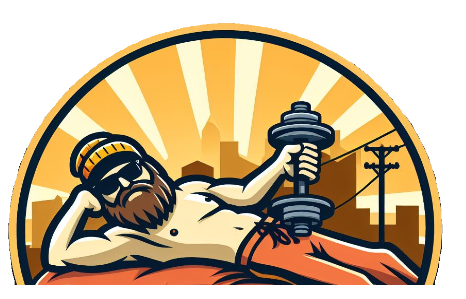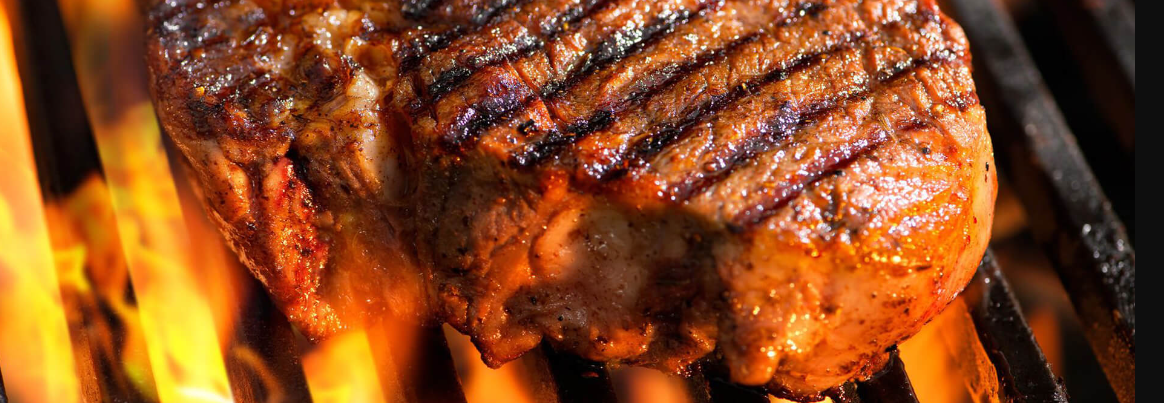The Steak Diet and You.
You may have heard about the latest trend that’s gaining traction among meat lovers and fitness enthusiasts alike: the Steak Diet. At its core, this diet emphasizes a high intake of steak, making it the centerpiece of meals. It has been turning heads due to its simplicity and the promise of various health benefits tied to protein-rich diets.
While steak has always been a popular dish, the idea of it dominating a dietary plan is a concept that many find intriguing. Celebrities and online influencers are among those who have sparked conversations around this meat-focused way of eating. It’s clear that for those who enjoy a juicy sirloin or tender ribeye, the Steak Diet presents a compelling option.
But is it just another fad or is there substance behind the sizzle? As someone interested in maintaining or improving their health, it’s essential to understand the implications of such a diet on your body. Before you consider filling your plate with steak day after day, I believe I should guide you through what the Steak Diet entails, its potential benefits, and the risks involved.
Nutritional Breakdown.
Steak is more than just a staple for meat lovers; it’s packed with essential nutrients. When you slice into a juicy cut, you’re getting a healthy dose of protein. Protein is vital for muscle maintenance and growth, and steak can be a powerful contributor to a protein-rich diet. Alongside protein, you’re also getting fats, some of which are healthy monounsaturated types that can benefit your heart when eaten in moderation.
Steak is also a treasure trove of vitamins and minerals. B vitamins are plentiful in red meat, aiding in energy metabolism and neurological functions. You’ll also find minerals essential for blood health and enzymatic activity, like iron and zinc. Iron, particularly high in red meat, helps combat fatigue by improving oxygen transport in the blood. Zinc supports your immune system and helps in tissue formation and repair.
However, no diet is without its downsides, and the steak diet is no exception. There are expertise-driven concerns about the potential health risks of consuming too much red meat. Overindulgence may lead to elevated cholesterol levels, thereby increasing the risk of heart disease. High consumption of red meat has also been linked in some studies to certain cancers, which is why moderation is KEY.
When it comes to portion control and frequency, there are practical steps you can take. I’ll guide you through how to enjoy your steak while still keeping your health in check. We will look at appropriate portion sizes and how often you should include steak in your meals to maximize benefits and minimize health risks. And if steak is a non-negotiable part of your diet, we’ll explore how you can select the healthiest cuts.
I am a great believer in variety, also ensuring you aren’t missing out on any critical nutrients provided by other foods . It’s all about balance, variety, and quality—whether you’re a die-hard steak enthusiast or a flexible protein consumer.
Personally if I ate one food type for any length of time i would suffer from “food burnout” and crave anything other than the food I was eating.
Practical Implementation.
You might be intrigued by the steak diet concept, but caution is key. You can enjoy the benefits without overindulgence. Here’s a rundown on doing it right. Think about portion control first. A palm-sized steak is typically enough for one serving, ensuring you get the nutrients without excess. Moderation is the mantra.
Next, consider the frequency. It’s tempting to turn every meal into a steak feast, but that’s not sustainable. Aim for 3-4 times per week, balancing with other protein sources on other days. This rotation will help maintain a healthy variety in your diet.
Quality matters. Opt for grass-fed and organic options where possible. These choices have a better omega-3 to omega-6 fatty acid ratio, which is good for your health. Plus, they’re better for the environment.
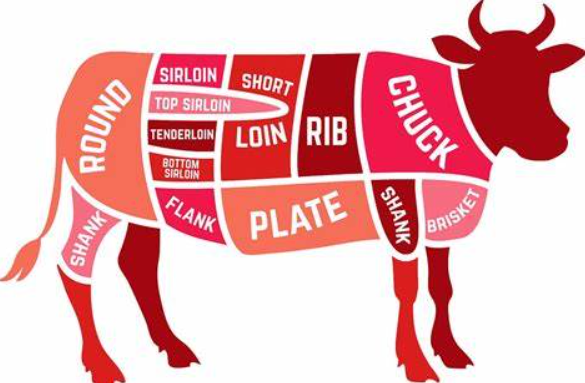
Diversity in cuts can offer different nutritional benefits. For instance, sirloin and tenderloin have lower fat content compared to rib-eye. By varying your choices, you’ll experience a range of textures and flavors while managing your fat intake.
Finally, cooking methods affect the healthiness of your steak. Grilling and broiling are better than frying in heavy oils. When you do cook, use minimal salt and healthy spices like turmeric or garlic for flavor. This elevates the taste without compromising health benefits.
This website provides 20 great steak recipes for weight loss. Check it out here at …
Beyond the Steak.
Embracing a steak diet could be a path to achieving certain health goals. However, it’s essential to balance this with other nutrition sources for overall wellness. Variety is not just the spice of life; it’s the cornerstone of good health. Making room for fruits, vegetables, and whole grains ensures that you’re not missing out on essential nutrients not typically found in steak.
The conversation doesn’t stop at health. The ethics of meat consumption and its environmental impact are crucial. It’s undeniable that meat production strains our planet’s resources. Eating less meat or choosing sustainably sourced options reduces your ecological footprint. It’s about mindful eating, considering the origin of your steak and the welfare of the animals.
Last but not least, food is more than sustenance; it’s a cultural and social experience. The steak diet isn’t the only way to enjoy meals or uphold traditions. Exploring other cuisines can enrich your palate and foster a greater appreciation for the diversity on your plate and in the world.
In conclusion, while the steak diet offers certain advantages, it’s beneficial to consume it thoughtfully. Align your diet with sustainable practices. Diversify your food sources for both nutritional balance and ecological harmony. And always remember that each bite you take can contribute to not just your health, but also the wellbeing of our planet.
The Steak and Egg Diet
The Steak and Eggs Diet is an old-school eating plan that gained popularity in the 1950s. Created by bodybuilder Vince Gironda, it’s a carnivorous diet featuring just two foods: steak and eggs.
Read more about the “Steak and Egg Diet” at ….
The Food Pyramid.
When adding other foods to our diet we quite often go back to the advice of “The Food pyramid” This has also come under attack recently as being a “manufacture” of food companies who have successfully lobbied to get “their foods” put on the pyramid so more sales are made.
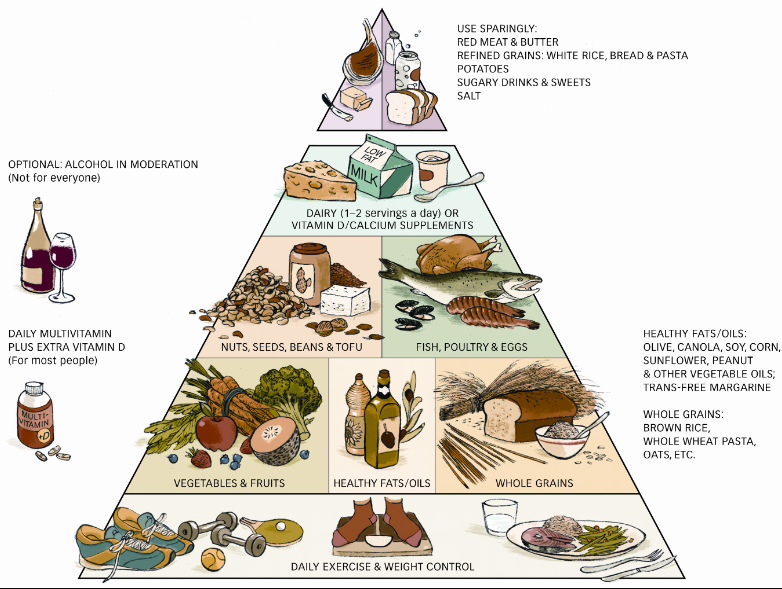
Who Invented the Food Pyramid?
The food pyramid has its origins not in recommendations for a balanced diet but in food shortages. The USDA released the Basic 7 food guide in 1943 to help U.S. citiz…
It was in this somewhat confusing context that Anna-Britt Agnsäter, an educator who worked for a Swedish grocery cooperative, designed the food pyramid
The food pyramid was reimagined by many countries in the early 21st century. In 2005, for example, Japan inverted the pyramid to come up with a spinning top design. In the same year, the USDA created a new pyramid design, calling it MyPyramid. This featured colourful stripes of varying widths, reflecting the relative proportions of different food groups. It also included a person running up steps to highlight the importance of exercise.
In 2011 the USDA replaced MyPyramid with MyPlate, which displayed the basic food groups (fruits, grains, protein, and vegetables) as sections on a plate, with each section’s size representing the dietary proportions of each food group. MyPlate did not incorporate an exercise component, nor did it include a section for fats and oils.
Source; Britannica
There has been a lot of debate about the effectiveness of the food pyramids and when claims are made that “Lucky Charms” are healthier than a steak, people credulity are stretched to breaking point.
So like everything, use your common sense and read the labels. Most breakfast cereals are full of sugar and eating them are one of the easiest ways of putting on weight. I now make my own cereal and use nuts and bran that i buy in bulk. A little bit of care when buying food goes a long way in the “battle of the bulge”
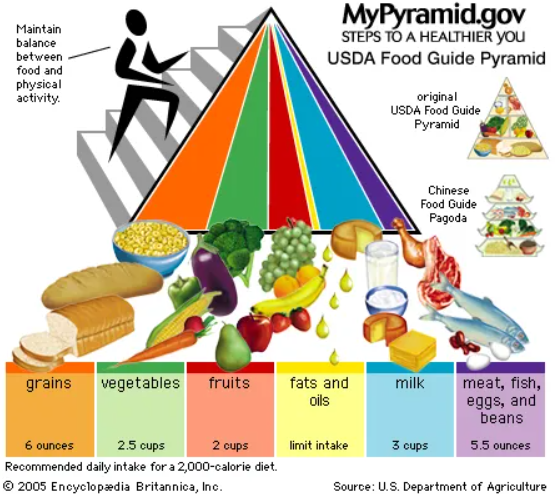
In Conclusion
While the steak diet offers certain advantages, it’s beneficial to consume it thoughtfully. Align your diet with sustainable practices. Diversify your food sources for both nutritional balance and ecological harmony. And always remember that each bite you take can contribute to not just your health, but also the wellbeing of our planet.
Steve

Some of this content was produced with A.I. but most is personal opinion and experience.
Some links on this site may be affiliate links, and if you purchase something through these links, I will make a commission on them.
There will be no extra cost to you and, you could actually save money. Read our full affiliate disclosure here.
